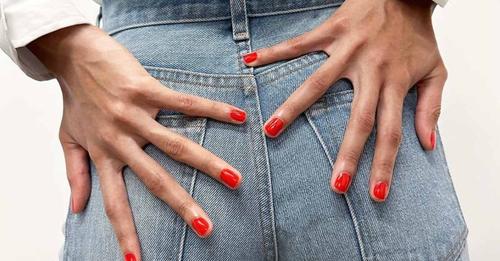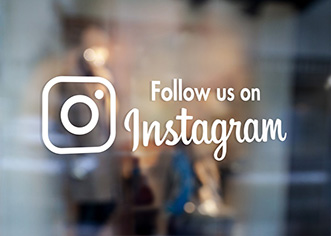By Alex Abad-Santosalex@vox.com
What the 1968 feminist protest against Miss America and quarantine-breaking haircuts have in common.
/cdn.vox-cdn.com/uploads/chorus_image/image/66915826/GettyImages_1215614652.0.jpg)
Now, in 2020, Americans have once again mythologized traversing a great distance — this time for haircuts.
In Yuba and Sutter counties in California, salons and barbershops have opened ahead of the state’s schedule and, according to the Los Angeles Times, some antsy people are traveling up to 600 miles for a cut. The day-long journeys to snip away stray follicles are drastic repercussions of salon shutdowns across the country.
Hair has been a roiling topic of conversation since coronavirus lockdowns first went into place across the country. With access to salons and barbershops cut off, Americans have been forced to face and change their habits: buying clippers, dyeing colors, taking to social media to debate how long it takes roots to grow or show off their failed attempts at a bangs trim. Even celebrities have confessed their follicular secrets. And as the shutdowns have gone on, people have become increasingly restless and desperate.
In Michigan, anti-lockdown protesters staged haircut demonstrations outside the Capitol in Lansing, defying the state’s stay-at-home orders and toting “End Tyranny” signs. Similar protests from stylists and cosmetologists have happened in Texas and Connecticut.
:no_upscale()/cdn.vox-cdn.com/uploads/chorus_asset/file/20026861/GettyImages_1214261134.jpg)
These moments of haircut valor come despite health officials’ warnings about a second wave of coronavirus infections and how salons and barbershops are particularly susceptible to virus spread because of the close nature of grooming. Despite this danger, as states begin to open up, salons and barbershops are being included in fairly early phases of reopening, often before hotels or schools.
And so salons and barbers have become the battlefield of a great American culture war.
As superficial as it seems, hair is one of the greatest expressions of our identity
There is an $87.9 billion global industry centered on what’s going on, or not going on, at the top of our heads. Haircuts, shampoos, conditioners, coloring, texture treatments, hairdryers, pomades, oils, sunscreens, scalp scrubbers, and everything else that allows us to do what we want to do with our hair is big business, with deep cultural significance. It’s also intrinsically personal.
The heart of the hair industry, and the beauty industry at large, is wrapped around this core idea of self-expression. As superficial as it may seem, how we cut, color, treat, and process our hair is how we want to see ourselves and, at the same time, how we want to be seen. Hair brings us closer to our idea of our ideal selves, whatever that may be.
“It is part of a routine that we follow — a routine we’ve been following since we were little kids,” J. Clark Walker, a stylist at Martial Vivot Salon Pour Hommes in New York City, told me. “How you feel about your hair 100 percent affects how we see ourselves. Image takes a lot of upkeep.”
“If you didn’t appreciate your hair, then you definitely do now.” Davide Marinelli, the owner of the Davide Hair Studio in New York City, told me, echoing Walker’s sentiment. Marinelli said that before the pandemic, he was doing 10 to 20 services per day. Hair “makes a huge impact on your everyday life and appearance and self-esteem.”
“HOW YOU FEEL ABOUT YOUR HAIR 100 PERCENT AFFECTS HOW WE SEE OURSELVES”
The way we perceive other people’s haircuts and styles is a language of its own, too. Based on our individual experiences, someone with a shock of pink in their hair sets off our own ideas about what that person is like, who they are, and what their interests are. The same goes for long hair, short hair, a bob, a high and tight, a shaved head, and whatnot.
Hair is an extension of our identity and affords some of us benefits that we may not even be aware of.
I’ve never had to think twice about what my hair looks like, other than I want it to look nice. Nice is completely subjective, of course, and usually involves something I saw on a handsome man in an advertisement or my dreaded Instagram Explore page. But other people, including women and particularly black men and women, don’t have this privilege. The choices they make directly affect how society perceives them and bring up a fraught history about how certain appearances were acceptable and others were not.
In 1968, (largely white) feminists protested the Miss America pageant, and hair tools were among the items symbolically destroyed. That protest is often referred to as the one where bras were burned, but in actuality, no bras were incinerated — they were just trashed along with curlers and wigs, symbols of the standards placed on women’s appearances. To protesters, not having curled hair and a full face of makeup was a symbol of resistance against the sexism of beauty pageants and the sexist norms of the time.
Black women and men have had to face lifetimes of standards placed upon them by white America about what kind of hair is acceptable and what isn’t — a lot more recently than 1968.
In March, Virginia became just the fourth state in history — after California, New York, and New Jersey — to ban hair discrimination, which unfairly targets black men and women for wearing natural hairstyles.
Earlier this year, a Texas high school senior made the news because his school wouldn’t allow him to walk in graduation unless he cut his dreadlocks. Similarly, in New Jersey in 2019, a white referee forced a black high school wrestler to cut his dreadlocks before a match or forfeit. Also in 2019, Brittany Noble, a former news anchor at Mississippi’s WJTV, said she was discriminated against and eventually fired after she wore her natural hair.
Instances like these make clear that how black men and women choose to wear their hair has direct consequences on the opportunities they have, and that institutions and workplaces have often used hair to control people of color.
For black women, wearing natural hair, as Noble did on air, has been a journey, explained Anthony Dickey, the founder of Hair Rules, a business and salon that are built on the credo of helping women, regardless of ethnicity, find beauty in their natural hair texture.
“Oftentimes, being natural for a black woman meant that she was being ‘militant’ or she was [carrying] the ideas that came out of the first natural hair movement in the ’60s and ’70s,” Dickey told me. Ebony explains this idea of militancy primarily revolves around the Afro, and how it embodied the Black Is Beautiful and Black Power coalitions. As black women advanced in corporate, predominantly white, America, their hairstyles changed too.
“No woman of color was going to trust a Sunday press to 60 percent chance of rain and go into a white corporate environment” in the ’80s, Dickey said.
As Dickey explained, and as documentaries like Chris Rock’s Good Hair explored, black women have dealt with decades of voices telling them what was acceptable and desirable hair. Save for a few supermodels like Naomi Campbell, they never saw themselves in beauty bibles like Vogue or Harper’s Bazaar or Glamour. This journey is interlaced with its own nuances and conversations about identity, pride, community, and experiences that many of us who aren’t black or people of color, and haven’t had to deal with these issues, would have trouble fully understanding. As Dickey points out, events like Virginia’s 2020 anti-hair discrimination law passing signal that the journey is still happening. “If we’re talking about natural hair, yeah, you’re talking about the imbalance of beauty and power in an antiquated, archaic beauty industry,” he tells me.
When people, mainly black men and women, are being discriminated against because of their hair, then how they choose to wear it is revealed to be political. The politics and power of hair become all the more clear when we see the response that new groups have to losing control over their own.
Why someone takes a 700-mile journey to get their hair cut
Hair salons and gyms were among the first things to go when states like California and New York began shelter-in-place directives to curb the coronavirus. The reason was simple: The virus spreads when there’s close contact between humans.
Regardless of politics, getting your hair cut is risky because it requires someone’s face to be so close to your own. You’re both breathing the same air, and, barring the advent of human bubbles or remote control robotic arms, you can’t socially distance from your stylist. Each state has its own reopening structure. In states like New York and California, barbershops and salons are usually scheduled to open in the second phase alongside smaller retail. But there is no designated amount of time that directs local governments to move from one phase to another. For example, depending on infection numbers, New York City may have to wait longer than New York state when moving to phase two of its reopening.
Still, as the New York Times points out, even though Americans were concerned about the spread of the virus, the idea of civil liberties being infringed was something right-wing voters are sympathetic to.
These health directives didn’t stop anyone from cutting their hair at home. But, politics aside, there is a special role stylists, barbers, braiders, and other hair professionals play in our society. At Elle, writer Chloe Hall interviewed black women and explained how difficult and time-consuming it is to do their hair at home instead of going to a salon.
“No matter who you are, everyone gets themselves looking a certain way every day, and there are a few things[such as haircuts] that we have been outsourcing for centuries,” Walker, the stylist from Martial Vivot Salon Pour Hommes, told me. It’s something I’m familiar with myself.
Walker has been my barber since I moved back to the city a little over five years ago. Haircuts with him (a fade, with a little length on top) are something I looked forward to because we’ve become friends. Plus, his cuts made me happy and more confident with my appearance — something I haven’t felt in a long time.
For certain people, however, doing their hair at home wouldn’t have the same symbolism of breaking the rules of quarantine, traveling a great distance to get your haircut, and then posting it on social media. The same goes for stylists who opened their shops against health directives. Getting a haircut when society tells you that you can’t is, in its own way, an act of rebellion.
:no_upscale()/cdn.vox-cdn.com/uploads/chorus_asset/file/20026873/GettyImages_1212435926.jpg)
One’s forbidden haircuts, then, become a way to affirm one’s identity not just to oneself but also to other people. An example: Republican Sen. Ted Cruz getting a haircut last month at a salon owned by someone who was briefly jailed for defying the state’s stay-at-home orders.
Some hair professionals rallied, too. In Texas and Connecticut, stylists said they were protesting because the shutdown has hurt their income. In Connecticut, a decision to push back reopening from May to June 1 rankled salon owners and employees.
“You take away our opportunity to operate based on a part of the industry not being ready,” Jason Bunce, an owner of a Connecticut barbershop, told WTNH on May 19. “That is not how this country works. It’s never worked that way. McDonald’s doesn’t shut down when Burger King runs out of buns.”
Of course, everyone is free to feel however they want about their haircuts. But there are some tragic, non-political consequences and outcomes that can result from these rushed reopenings and interactions.
Last month, two stylists at a Missouri branch of Great Clips tested positive for the coronavirus and were found to have exposed more than 100 customers to the disease. And on May 15, CBS reported that a barber who defied stay-at-home orders in Kingston, New York, had, per Gov. Andrew Cuomo, “infected over a dozen people.”
There’s the other side of the equation too: that while you may be ready to break quarantine, your stylist might not necessarily want to see you just yet. They have their own safety to worry about and precautions to take.
“The feeling that it’s your right to get a haircut whenever you want, and not your privilege, is driving people crazy,” Walker told me. “Speaking for myself, I am lucky, and most of my clients understand the situation and have embraced the idea of the quarantine ‘flow’ like a trophy. Are they dying to get a haircut? I’m sure, but they also get the situation we are all in.”
The quarantine “flow” I’m currently sporting is closer to a mullet and makes me feel like a time-displaced, renegade aerobic instructor. It’s currently crawling, all uneven, down the back of my neck. And I can’t wait to chop it off and make fun of it with Clark, as soon as New York City makes it to phase two in its reopening.
By Alex Abad-Santosalex@vox.com
Support Vox’s explanatory journalism
Every day at Vox, we aim to answer your most important questions and provide you, and our audience around the world, with information that has the power to save lives. Our mission has never been more vital than it is in this moment: to empower you through understanding. Vox’s work is reaching more people than ever, but our distinctive brand of explanatory journalism takes resources — particularly during a pandemic and an economic downturn. Your financial contribution will not constitute a donation, but it will enable our staff to continue to offer free articles, videos, and podcasts at the quality and volume that this moment requires. Please consider making a contribution to Vox today.







